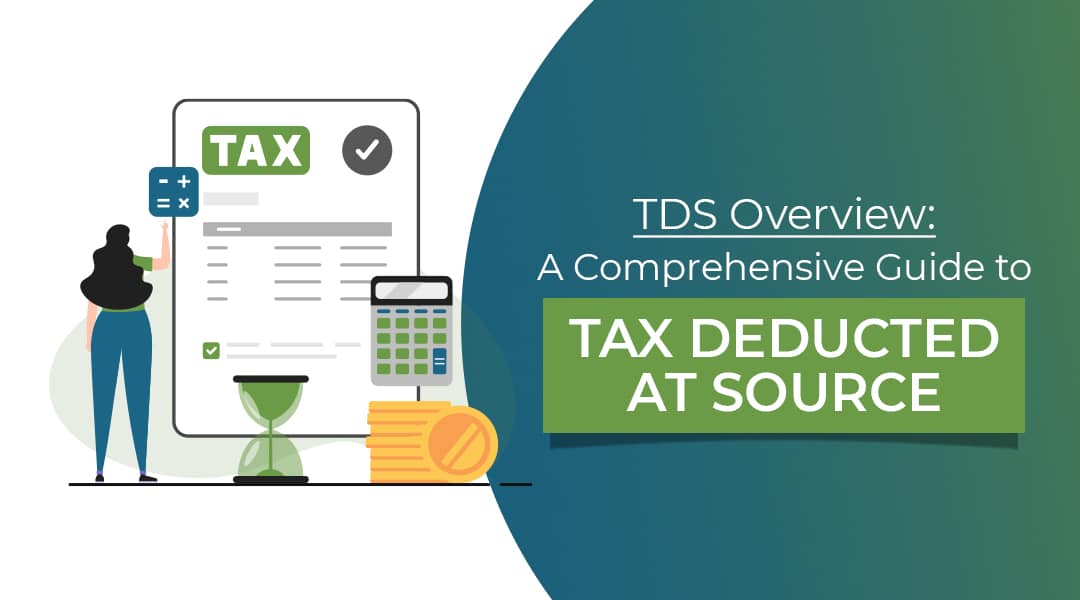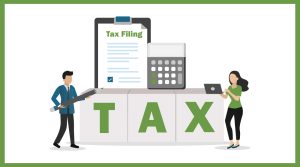Tax Deducted at Source (TDS) is a crucial aspect of taxation in India. It is a method of collecting income tax at the very source of income generation. In this comprehensive guide, we will explore the meaning of TDS, its significance, various types of TDS, and more. By understanding the TDS system, taxpayers can better manage their finances and comply with the taxation laws in India.
What is TDS: Understanding the Meaning
TDS or Tax Deducted at Source, is a method of income tax collection implemented by the Indian government. Under this system, the payer deducts a certain percentage of tax from the payment made to the payee and deposits it with the Income Tax Department. The payee receives the net amount (after TDS deduction) and can claim credit for the deducted tax while filing their income tax return.
The key advantage of the TDS system is that it helps the government collect taxes in advance and ensures a steady flow of revenue throughout the year. For taxpayers, TDS spreads their tax liability evenly over the year, reducing the burden of paying a lump sum at the time of filing their income tax return.

Significance of Tax Deducted at Source (TDS)
The TDS system offers several benefits for the government as well as taxpayers. Some of the key advantages include:
-
Prevention of tax evasion
The responsibility of depositing the tax lies with the payer (deductor) rather than the payee (deductee). This makes it easier for the government to monitor tax payments and prevent tax evasion.
-
Steady source of revenue
TDS ensures a continuous flow of revenue for the government, instead of waiting for taxpayers to file their returns and pay taxes.
-
Ease of compliance for taxpayers
Since TDS is deducted at the source of income generation, taxpayers do not need to pay the entire tax liability in one go. This reduces the burden of tax payments and helps taxpayers better manage their finances.
Key Components of the TDS System
TDS Deductor and TDS Deductee
In any transaction involving TDS, there are two parties involved – the person making the payment (deductor) and the person receiving the payment (deductee). The deductor is responsible for deducting the tax at the specified rate and depositing it with the government. The deductee, on the other hand, receives the net amount after the TDS deduction and can claim credit for the tax deducted.
TDS Rates and Threshold Limits
The Income Tax Act prescribes different TDS rates and threshold limits for various types of payments, such as salary, interest, rent, commission, and professional fees. TDS is deducted at the specified rate only if the payment exceeds the threshold limit. It is important for taxpayers to be aware of these rates and limits to ensure compliance with the TDS provisions.
TDS Certificates
After deducting TDS, the deductor is required to issue a TDS certificate to the deductee. This certificate acts as proof that the tax has been deducted and deposited with the government. The deductee can use this certificate to claim credit for the TDS amount while filing their income tax return.
TDS Returns and Due Dates
Deductors are required to file TDS returns quarterly, providing the financial details of all deductees for whom TDS has been paid during the quarter. Filing TDS returns on time is crucial, as failure to do so can attract penalties.
Types of TDS: An Overview
There are several types of TDS, depending on the nature of the income and the parties involved. Here are some of the most common types of TDS:
-
TDS on salary
Employers are required to deduct TDS from the salaries of their employees at the applicable income tax slab rates. The TDS amount is deposited with the government and reflected in the employee’s Form 26AS.
-
TDS on interest
Banks and financial institutions are required to deduct TDS on interest payments made to depositors. The TDS rate for interest payments is typically 10% and if the depositor has not provided their PAN, it is 20%.
-
TDS on rent
The TDS rate for rent payments is 2% for the use of machinery, plant, and equipment and 10% for land, building fittings, or car.
-
TDS on sale of property
TDS is deducted at a rate of 1% on the sale of immovable property, excluding agricultural land.
-
TDS on winnings
TDS is applicable on winnings from games like a lottery, online gaming, and crossword puzzles at a rate of 30%.
TDS Exemptions and Forms
In certain cases, taxpayers can claim exemptions from TDS by submitting specific forms. For instance, resident individuals and HUFs can submit Form 15G (for individuals below 60 years) or Form 15H (for senior citizens aged 60 years or above) to the bank if their total income is below the taxable limit. This prevents the bank from deducting TDS from their interest income.
Non-resident taxpayers with income below the basic exemption limit can file an application under Section 195(3) of the Income Tax Act to obtain a certificate of non-deduction or lower deduction of taxes.
TDS Compliance: Filing TDS Returns, Payments, and Penalties
Filing TDS Returns
Deductors must file TDS returns quarterly, providing details of all TDS deductions made during the quarter. Different forms are prescribed for filing TDS returns, depending on the type of payment. Some common TDS return forms include:
- Form 24Q: TDS on salary payment
- Form 26Q: TDS on non-salary payments
- Form 27Q: TDS on payments made to non-residents
- Form 26QB: TDS on sale of property
- Form 26QC: TDS on rent payments
TDS Payment and Due Dates
The TDS amount deducted must be deposited with the government within the specified due dates. The general due date for depositing TDS is the 7th day of the month following the month of deduction. For TDS deducted in March, the due date is April 30th for non-government deductors and April 7th for government deductors.
Penalties for TDS Non-Compliance
Failure to comply with TDS provisions can result in penalties, including late filing fees, interest, and prosecution. Some common penalties include:
- Section 234E: Late filing fees of ₹200 per day, not exceeding the TDS amount, for delayed filing of TDS returns.
- Section 271H: Penalty ranging from Rs. 10,000 to Rs. 1,00,000 for non-filing of TDS returns.
- Section 201(1A): Interest on late deduction or non-deduction of TDS at a rate of 1% per month or part of the month.
TDS Credits: Form 26AS and Claiming TDS Credit
Form 26AS is an annual consolidated tax statement that lists all TDS deductions and direct tax payments linked to a taxpayer’s PAN. Taxpayers can view and download their Form 26AS from the Income Tax Department’s e-filing portal.
To claim credit for TDS, taxpayers must ensure that the TDS details in Form 26AS match their TDS certificates. If there is any mismatch, the taxpayer should contact the deductor to rectify the error.
Conclusion
Understanding the TDS Overview and its significance is crucial for taxpayers to ensure compliance with the Income Tax Act and avoid penalties. By staying informed about the various types of TDS, rates, exemptions, and compliance requirements, taxpayers can better manage their tax liabilities and claim credit for TDS deductions. GGC’s Practical Training Academy (GGCPTA) offers a short-term finance course designed to provide personalized guidance on accurately calculating TDS liabilities, optimizing tax deductions, and covering various other finance-related topics. Enroll now to enhance your finance skills with GGCPTA.



